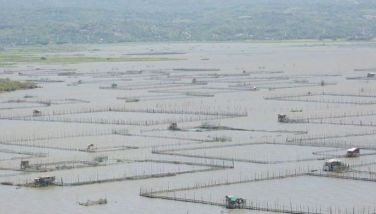Philippine temperature hits dangerous levels
MANILA, Philippines – Temperatures across the country continued to soar as the actual heat index observed by the state weather bureau reached dangerous levels in the past days.
According to the Philippine Atmospheric, Geophysical and Astronomical Services Administration (PAGASA), the heat index in Cabanatuan City reached 52.3 degrees Celsius at 2 p.m. Tuesday, surpassing the earlier record on Monday at 51 degrees.
The heat index, or human discomfort index, gives the apparent temperature or what humans perceive or feel as the temperature affecting their body, according to the state weather bureau.
“High air temperatures and high relative humidity will give high apparent temperatures or indices. Full exposure to sunshine can increase the heat index by nine degrees,” added PAGASA.
A heat index between 41 to 54 degrees is considered dangerous and likely to cause cramps, exhaustion and even heat stroke after continuous activity.
Aside from Cabanatuan, the heat index in other parts of the country also reached dangerous levels this week.
In Science Garden in Quezon City, PAGASA observed that the heat index reached 45.4 degrees at 2 p.m. on Tuesday. The heat index at Sangley Point in Cavite and Clark Airport in Pampanga reached 50.2 and 51.9 degrees, respectively.
Despite soaring temperatures, the weather bureau said localized thunderstorms may still occur in some parts of the country.
The weather bureau said the hottest temperature recorded so far this year was in General Santos City on March 1 at 38.6 degrees Celsius.
The historical record is 42.2 degrees Celsius, observed twice in Tuguegarao City on April 22, 1912 and on May 11, 1969.
PAGASA earlier cautioned the public against too much outdoor exposure that could lead to heat stroke.
Meanwhile, the Catholic Bishops’ Conference of the Philippines (CBCP) is set to issue oratio imperata, or obligatory prayers, for rain to cushion the effects of drought caused by El Niño.
CBCP president Lingayen-Dagupan Archbishop Socrates Villegas yesterday expressed optimism that the oratio imperata would work.
“Have faith in the power of prayer,” he added.
Oratio imperata is issued to cushion the effects of calamities.
“By issuing it, we recognize that man’s capacity may not be enough to avert such problems, hence we invoke the One whose power far surpasses that of man,” CBCP-Public Affairs Committee executive secretary Fr. Jerome Secillano said.
“By collectively praying the oratio imperata, we believe that God will put an end to something that affects the wellbeing of man,” he added.
PCG: 30 people drowned
The Philippine Coast Guard (PCG), on the other hand, reminded those going to the beach to exercise caution to avoid death by drowning.
PCG spokesman Commander Armand Balilo said the agency received reports that 30 people drowned between March 1 to April 13.
“The public should exercise caution. We all know that with this weather, many people would want to take a swim at the beach to relieve themselves of the heat, some even opt to indulge in night swimming. But the people should be mindful and exercise precautionary measures,” he added.
“The deaths of these people were classified as drowning, although there were different circumstances. There were those who died on the beach, or someone was just crossing the river and drowned. But a majority of them perished while swimming,” Balilo said.
He reminded the public to observe the guidelines given by the PCG when swimming, such as not to swim at night, not to swim when drunk, not to swim in places without lifeguards and not to leave the children unattended.
There should be designated swimming areas because there are instances when there will be sudden slope that makes it difficult for some swimmers to stay afloat. There should also be signs on the allowed distance for swimming from the shoreline.
Balilo also cited some cases when friends and relatives who rushed to help someone drowning also drowned because they were not trained rescue swimmers.
“As we have said before, do not attempt to rescue someone just because you think you are a strong swimmer. There is a technique in rescuing someone. One of the essentials in rescue swimming is having a floater,” he explained. – With Evelyn Macairan, Eva Visperas
- Latest
- Trending



























